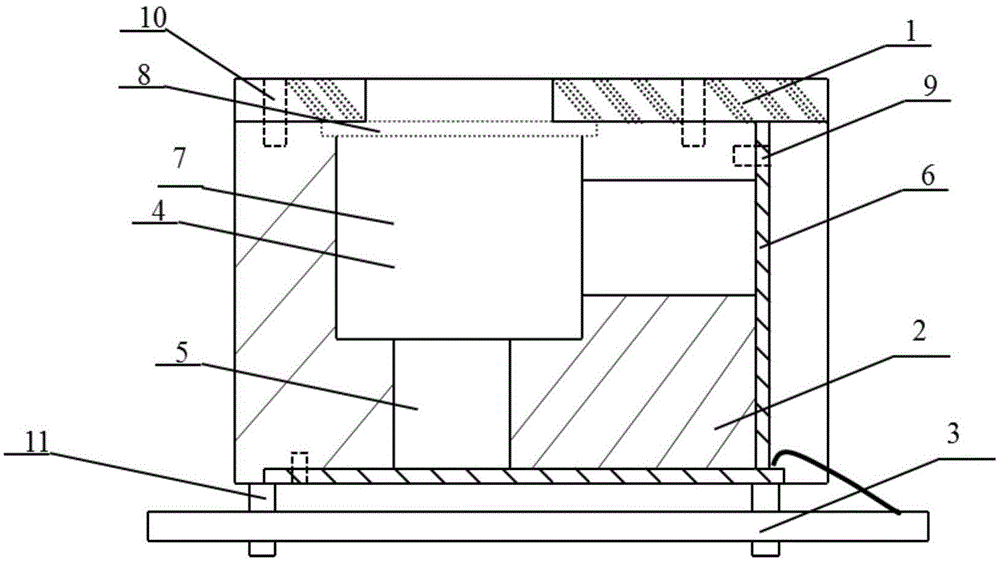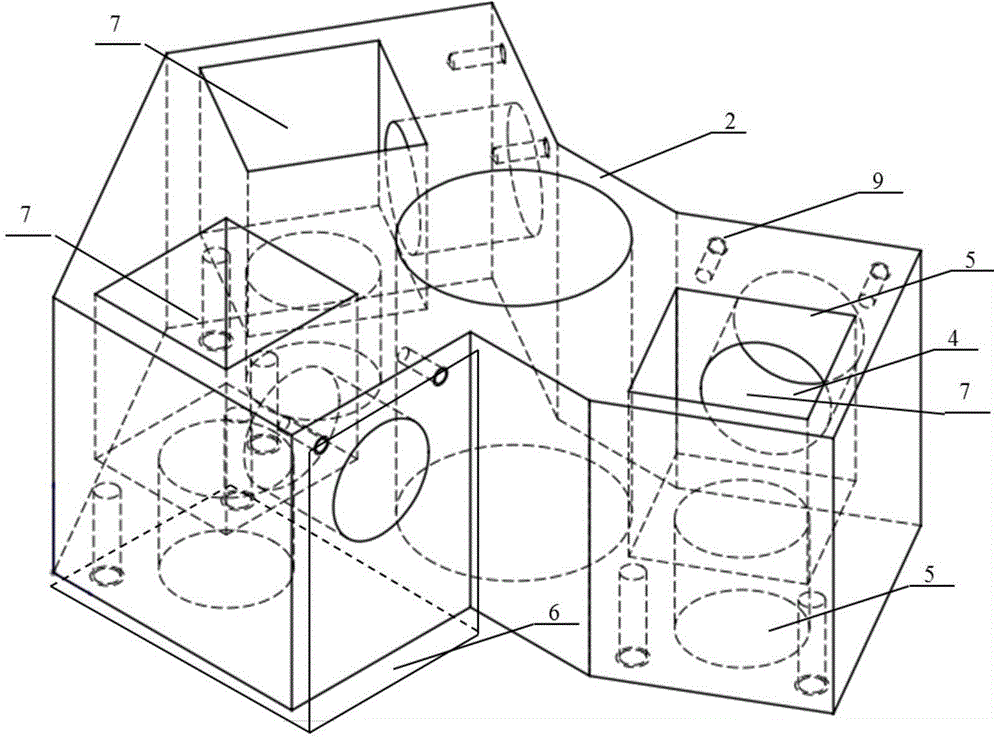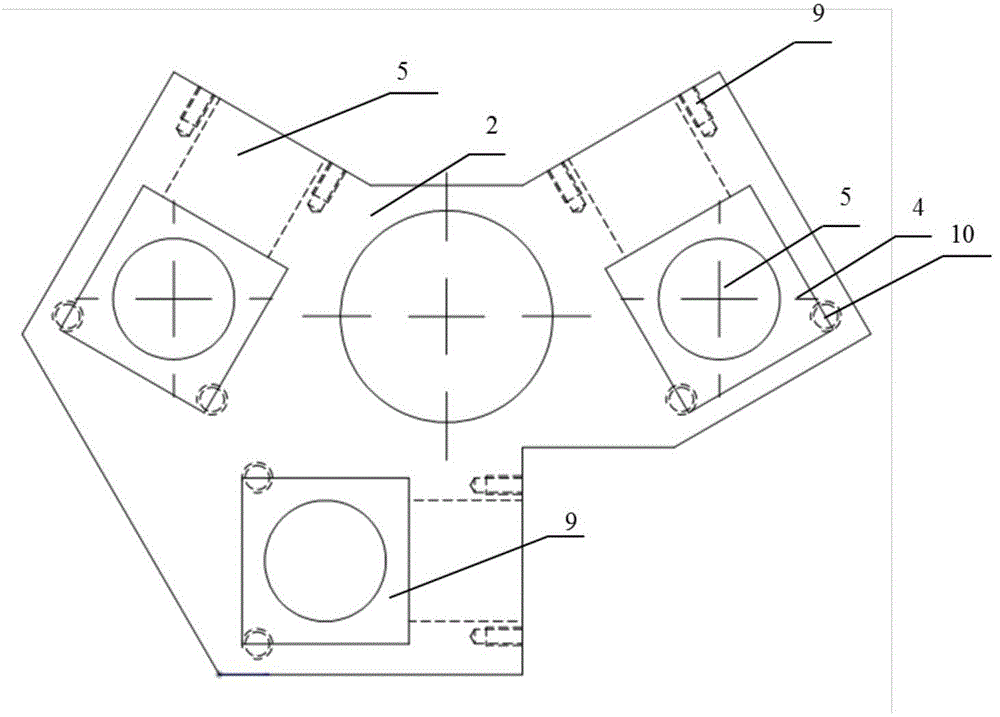All-optical path polarization sensor based on beam splitter prism
A spectroscopic prism and sensor technology, applied in the field of navigation sensors, can solve the problems of orthogonal error in the initial installation direction, insufficient collection of polarized light information, influence of sensor accuracy, etc. Effect
- Summary
- Abstract
- Description
- Claims
- Application Information
AI Technical Summary
Problems solved by technology
Method used
Image
Examples
Embodiment Construction
[0010] Such as figure 1 As shown, the all-optical path polarization sensor based on the beam-splitting prism is mainly composed of an optical lens structure 2, a photoelectric detection module 6 and a base 3; There are three prism grooves 4, the middle beam-splitting prism groove is parallel to the reference direction, the left beam-splitting prism groove is 60° to the reference direction, the right beam-splitting prism groove is 120° to the reference direction, and the bottom and right of each beam-splitting prism groove 4 are splitters. The optical channel 5 that outputs two polarized lights, a total of six optical channels, ensures that the two polarized lights split by the beam splitting prism 7 enter the photoelectric detection module 6; 7 is placed in the beam splitting prism groove, and a buffer fixed rubber ring 8 is placed between the upper cover 1 and the beam splitting prism groove 4 to fix the beam splitting prism 7; Fixed connection; the optical lens structure 2 ...
PUM
 Login to View More
Login to View More Abstract
Description
Claims
Application Information
 Login to View More
Login to View More - R&D
- Intellectual Property
- Life Sciences
- Materials
- Tech Scout
- Unparalleled Data Quality
- Higher Quality Content
- 60% Fewer Hallucinations
Browse by: Latest US Patents, China's latest patents, Technical Efficacy Thesaurus, Application Domain, Technology Topic, Popular Technical Reports.
© 2025 PatSnap. All rights reserved.Legal|Privacy policy|Modern Slavery Act Transparency Statement|Sitemap|About US| Contact US: help@patsnap.com



